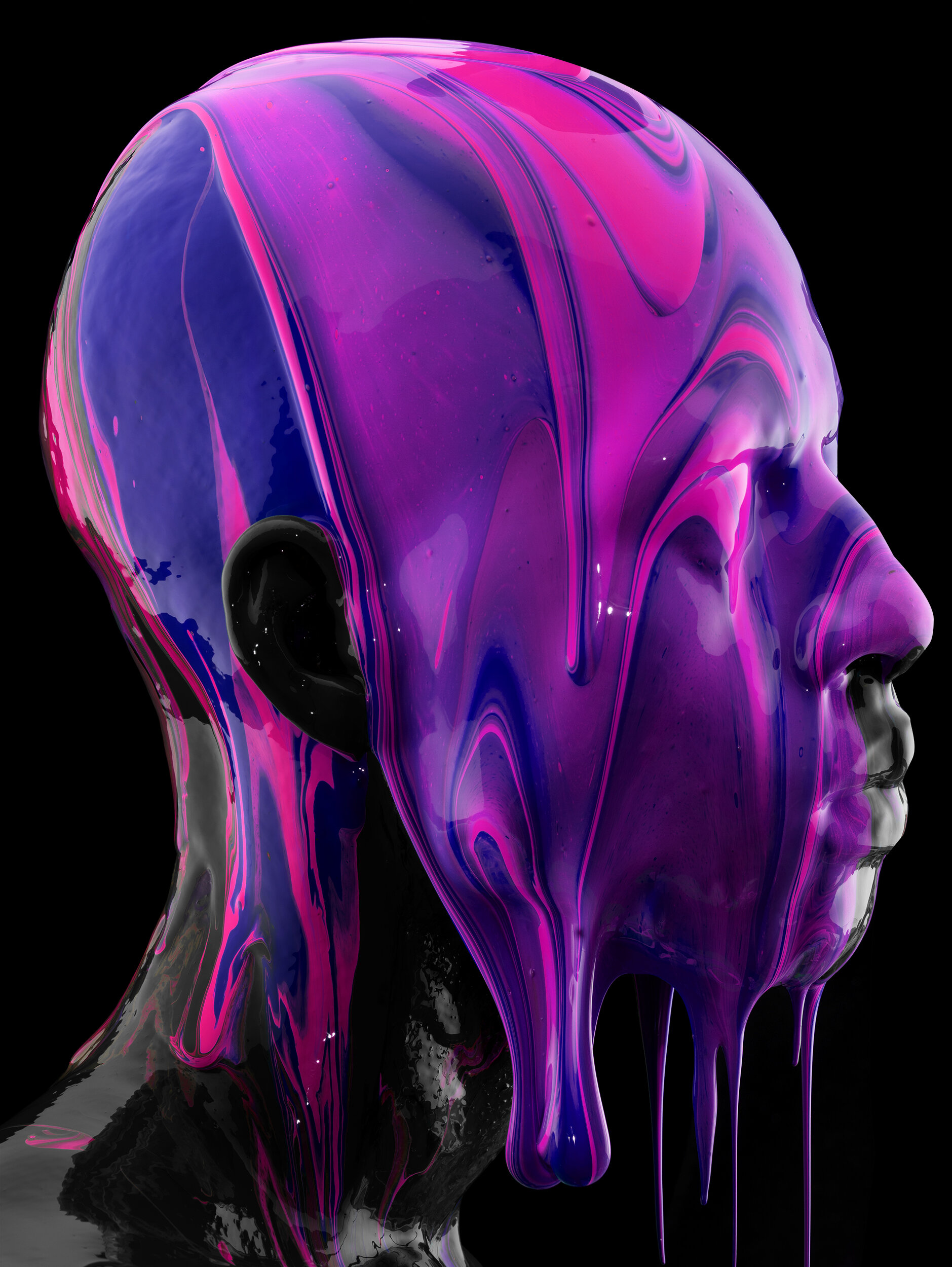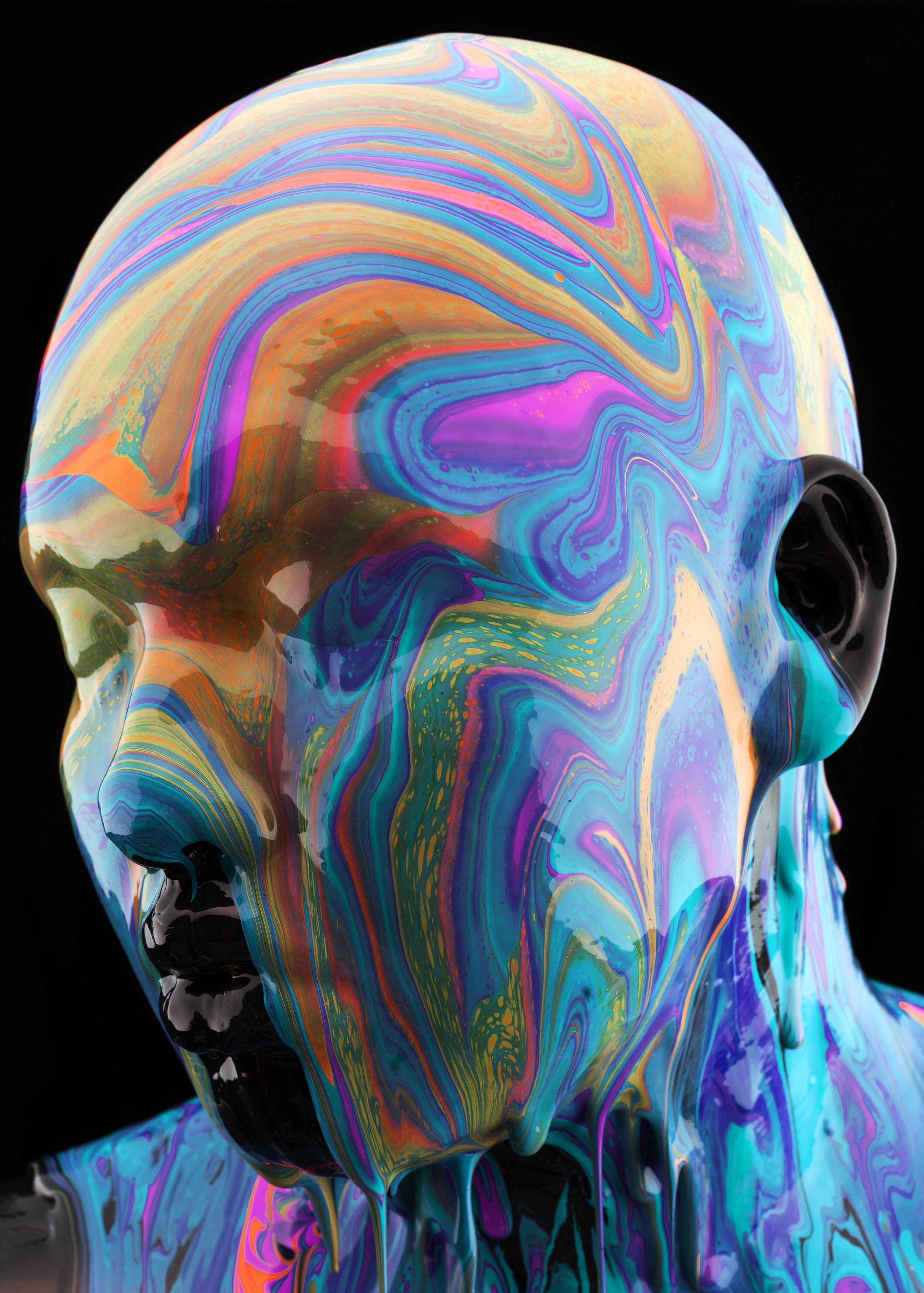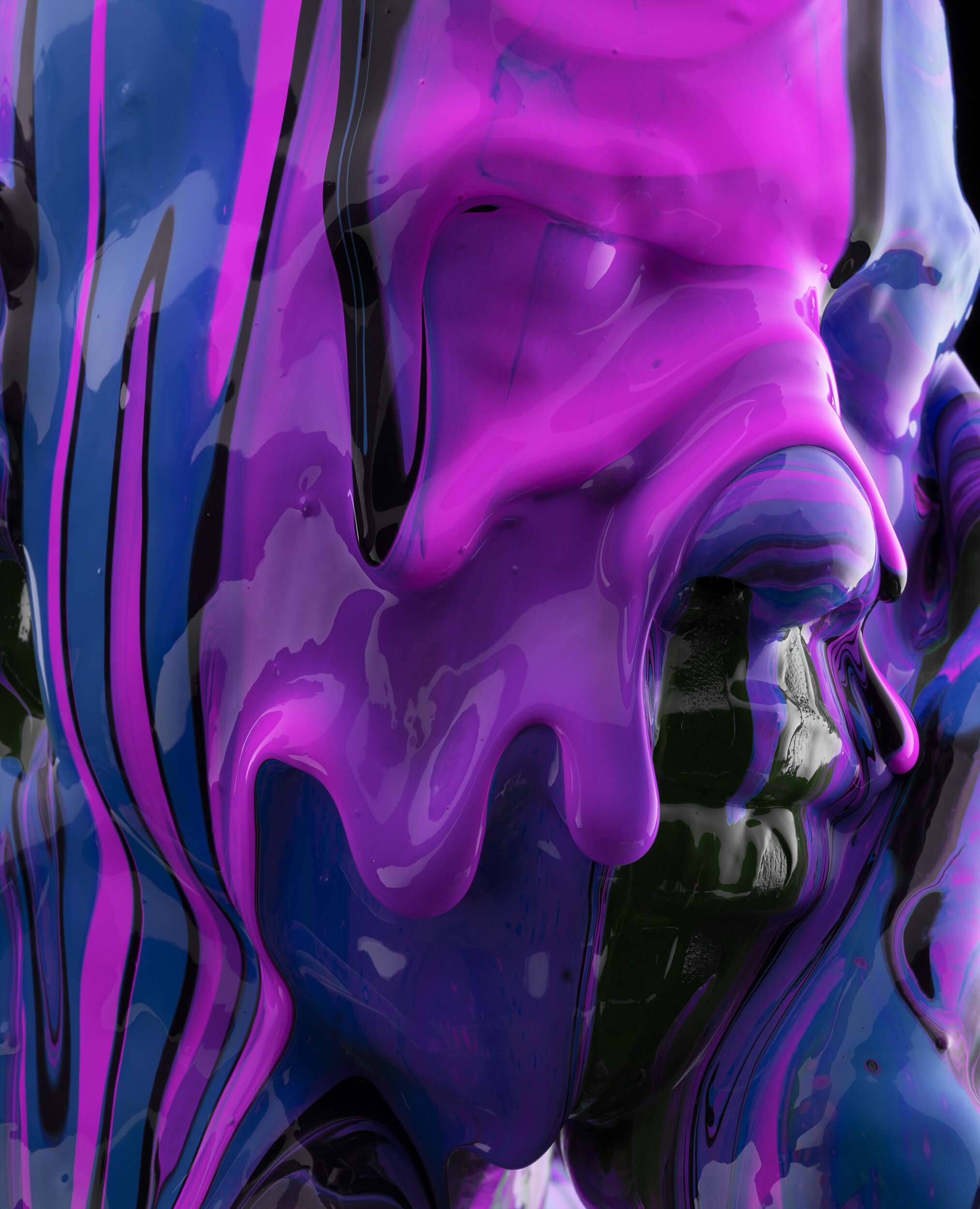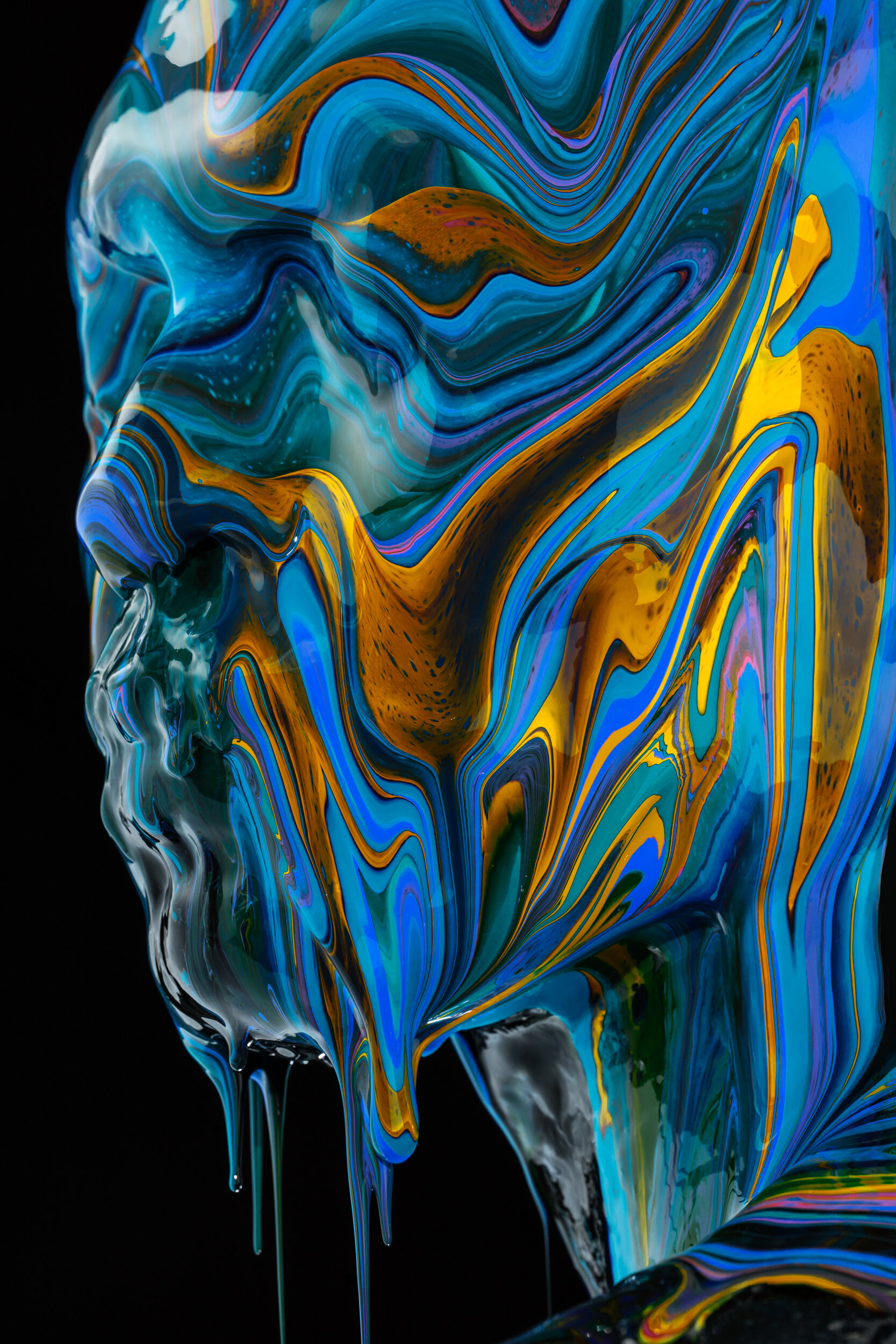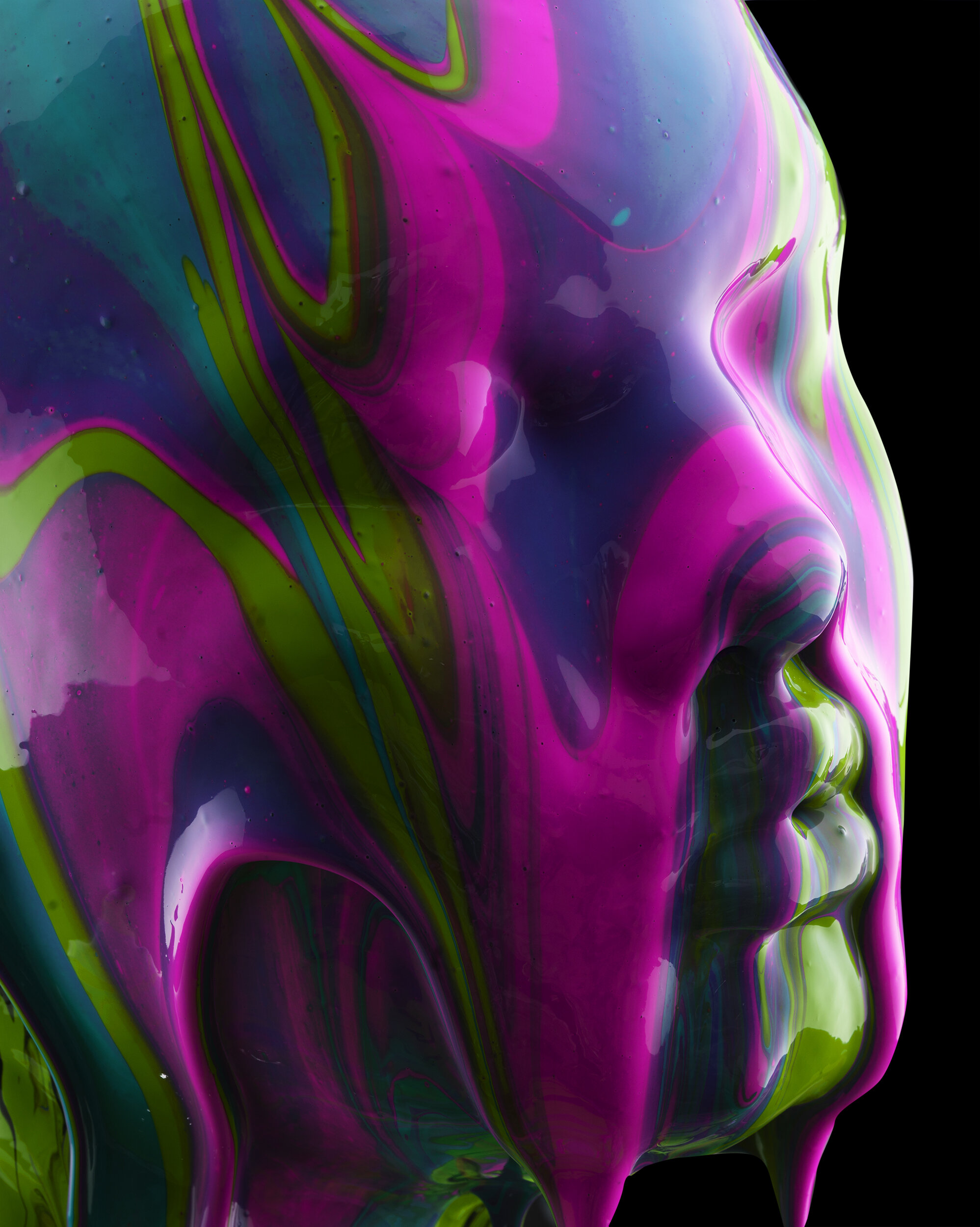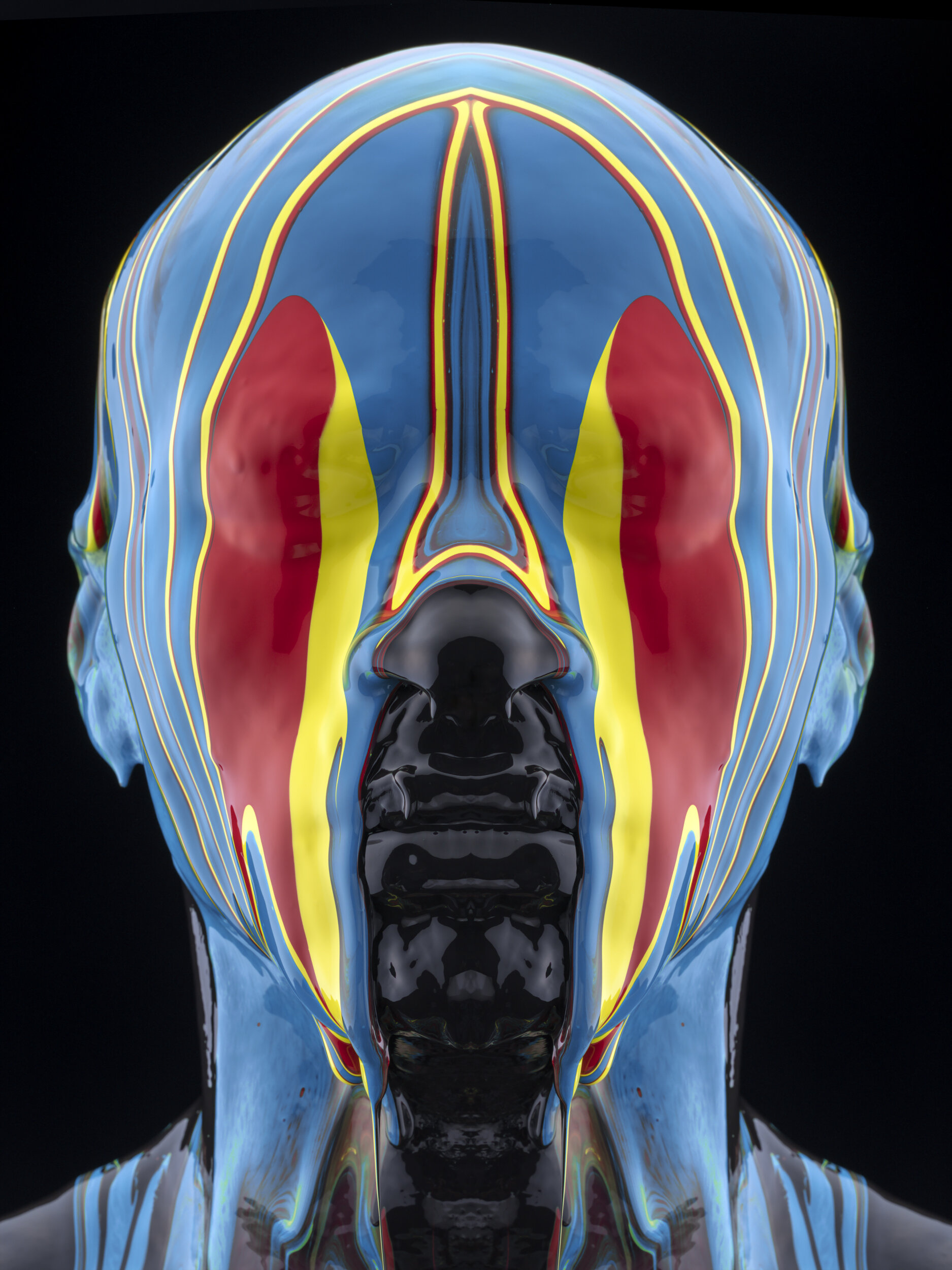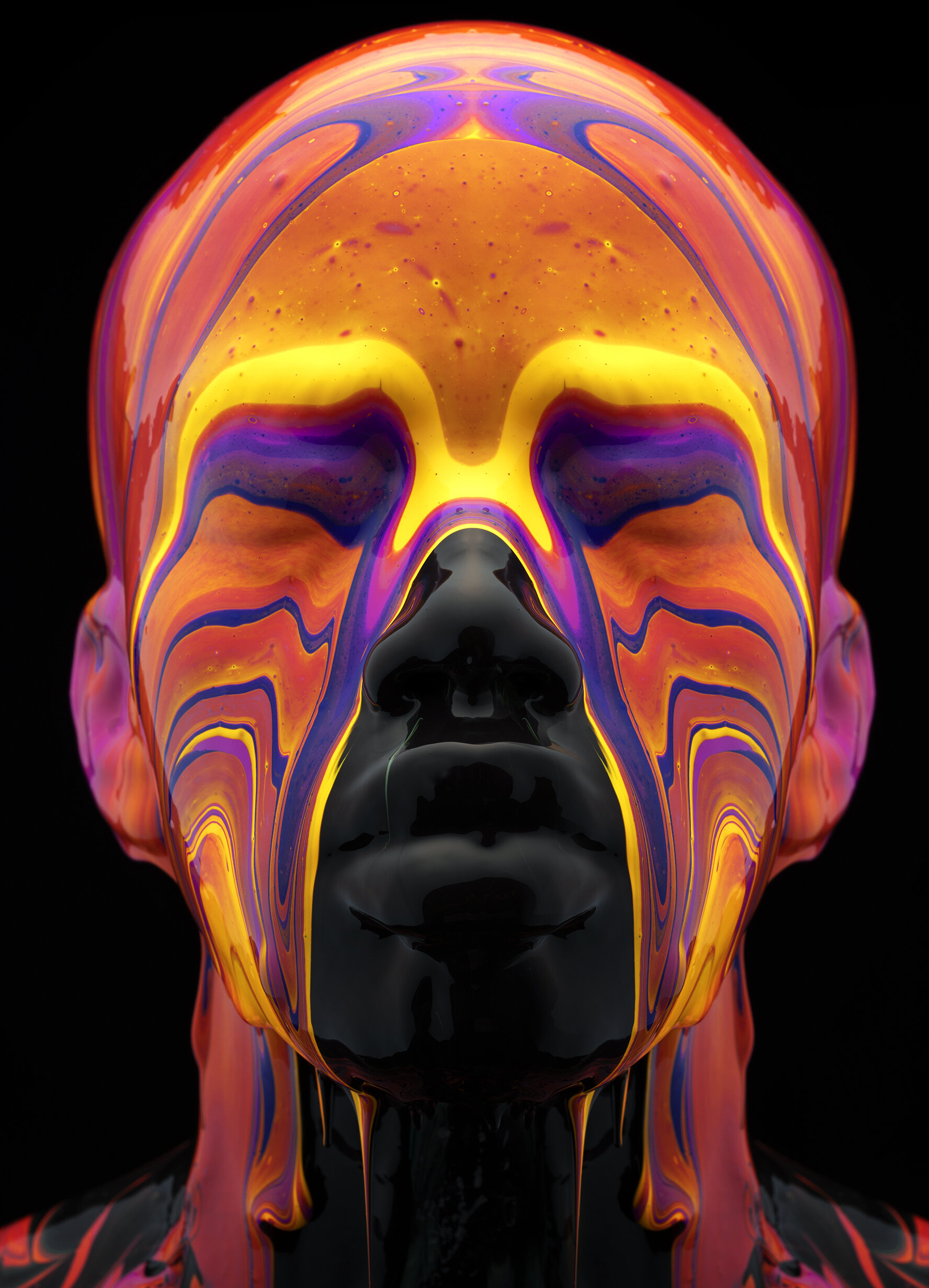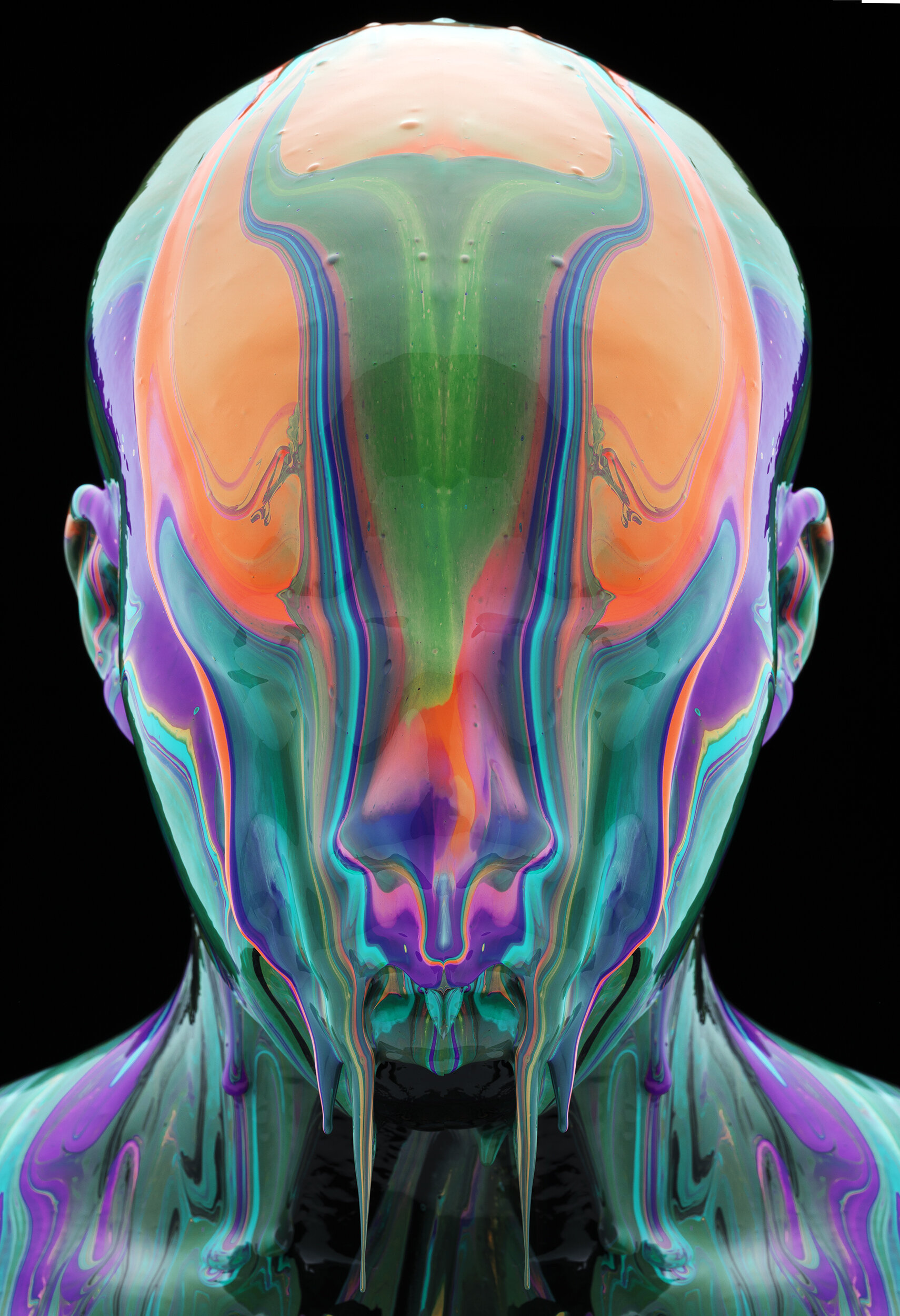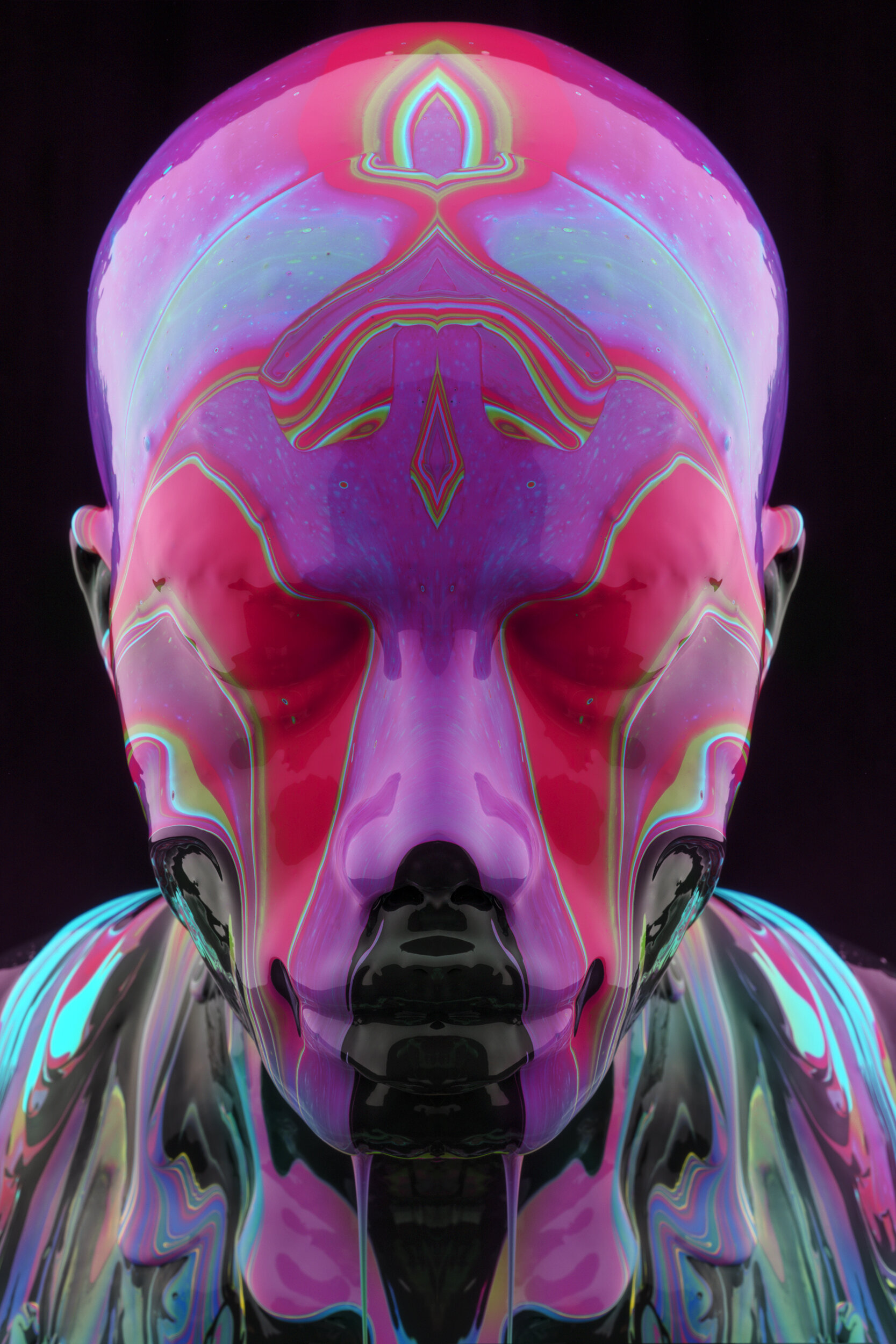BLACK IS A COLOR
What does “Black Is A Color” represent?
When primary colors are mixed at equal parts, black is ultimately the result. During this complex process, an imperial display of tones appears in the swirling to mirror powerful structure & emotion from the subjects. At a crucial time for the nation to unite, I hope this collection encourages empathy, unity & a non-binary view of race. Black Is A Color challenges one to see past profiling & foresee the beauty that is capable of elevating the human experience.
How does this project compare to your other fine art series?
This series is an unintentional trilogy to my “Nothing to See” & “United States of Purple” series by incorporating bald subjects as highly conceptual pieces of my work. This has become the framework behind my artistry. From that standpoint, I always look at bald subjects as representative of mankind & I want to strip it down to the absolute most simplistic form so that the subjects in the art represent humanity, not just a few the person in the image. The images are not portraits but rather graphic representations of the concept.
I attempt to speak to mankind as opposed to an individual & that’s what you get when you include such simple features as just the head & eyes of the subject. The specific colors I incorporated provide a vividness, boldness, & a contemporary art color scheme to pique the interest of others & to ultimately elicit a response. The colors are highly methodical & deliberate.
What was your inspiration behind Black Is A Color?
So much of my work is an expression of the anxiety I feel, & I think most of America is feeling as we see the murders of people with African ancestry, chaos in the streets, division unlike anything we have seen in this country since the Civil War & a global pandemic. When I first experimented with this series, I explored the paint in relation to that of the upcoming election. Post-shoot, I felt that I didn’t fully identify what I was trying to interpret & then I explored the series in-depth & started to see the story come to life, so I persisted & kept working towards it. Ultimately, I started this project to see what materializes & I decided to explore this until I truly discovered the way I wanted to portray the series.
At the height of the BLM movement & post-George Floyd, I had spoken about the assault on freedoms & the division, but I haven’t created anything that spoke to how I felt about systemic racism & social injustice, or the way society perceives race as a binary stem. I wanted to explore a non-literal & unconventional way to share with people a different point of view. A view that boldly illustrates a slice of what is missed by a binary approach to race.
Why do you consider this an “unintentional trilogy”?
It is an unintentional trilogy in that I was continuing to speak towards art as a form of expression. Creativity is intrinsically linked to anxiety & the anxiety of feeling unable to express the emotions of what I am experiencing around me & other people.
This project was conceptualized from pure anxiety during these unprecedented times. This series is complex & it speaks to what I was feeling at the time. And, rather than being so literal in speaking about symbols of racism, hate, or division, I thought it would be better to focus on the beauty of relationships & experiences & look at what is lost when division occurs. The vivid colors provide an optimistic & future-forward outlook for next generations to come.


